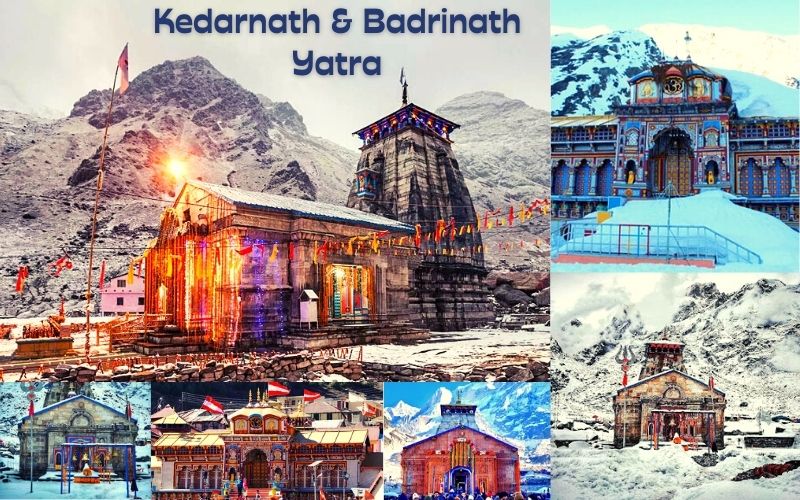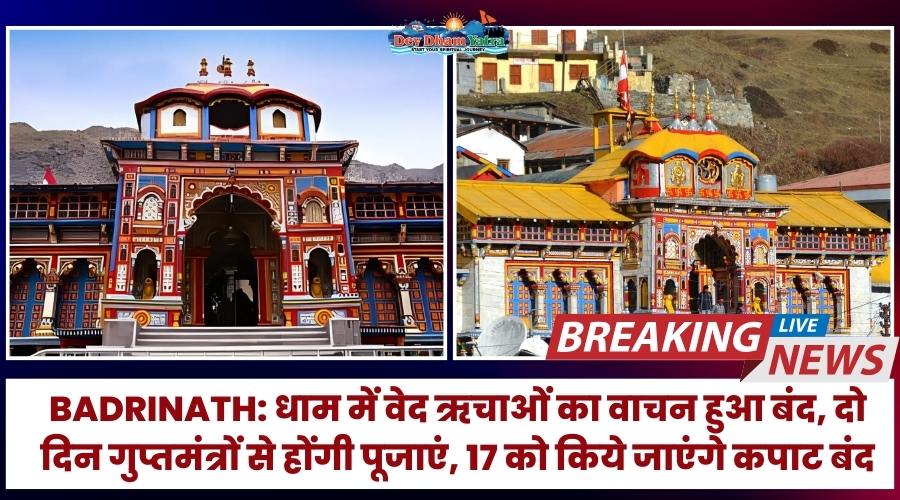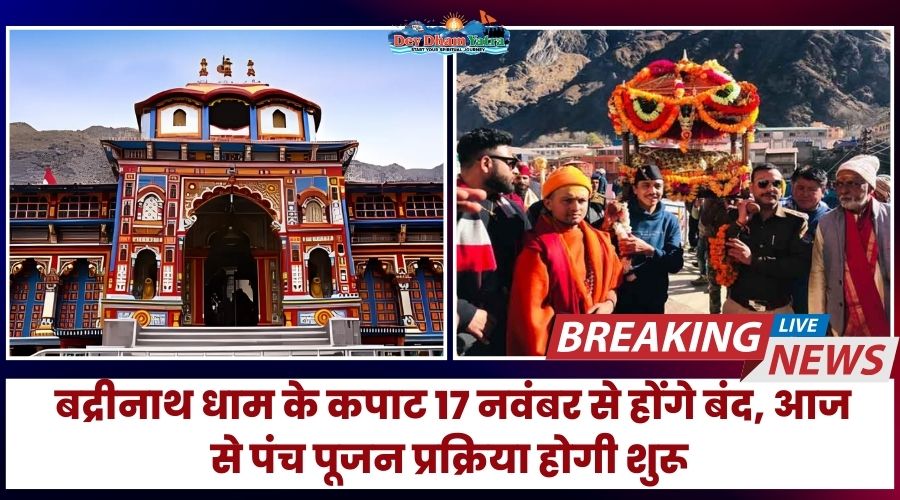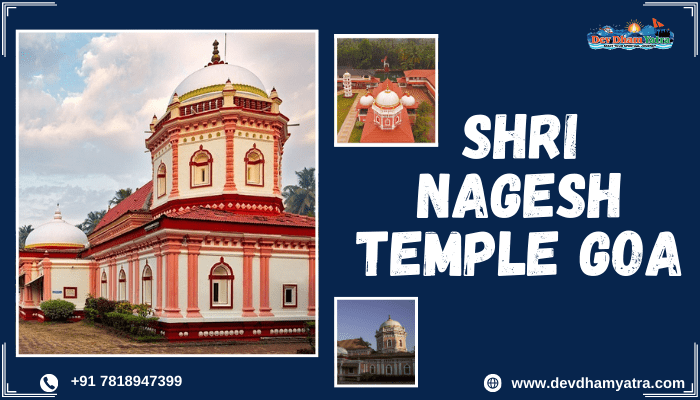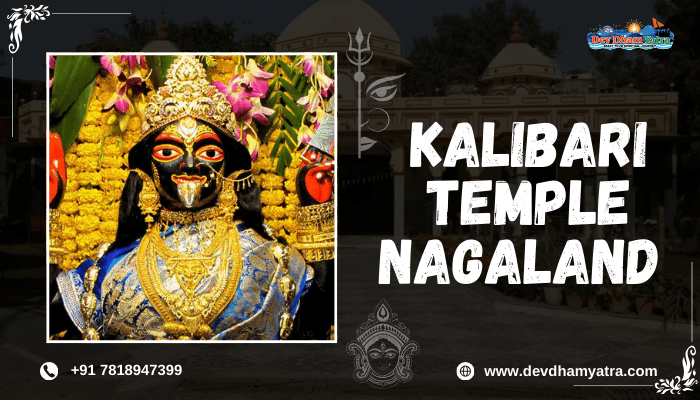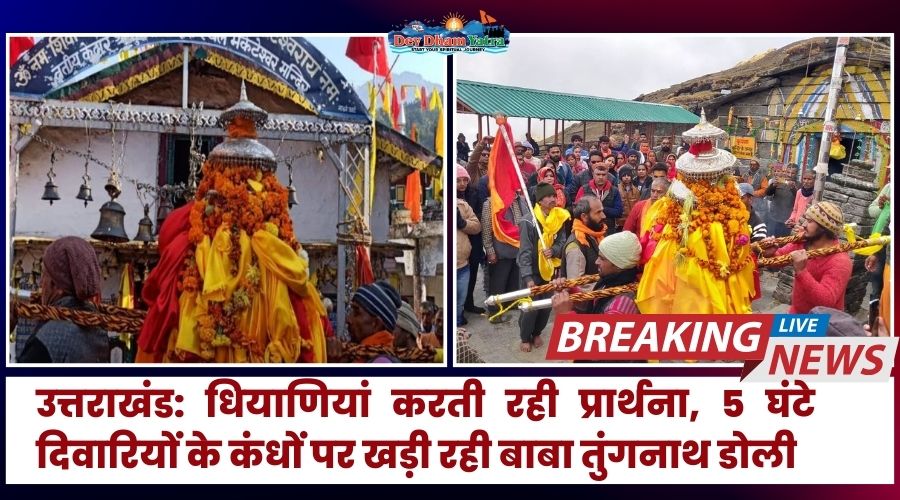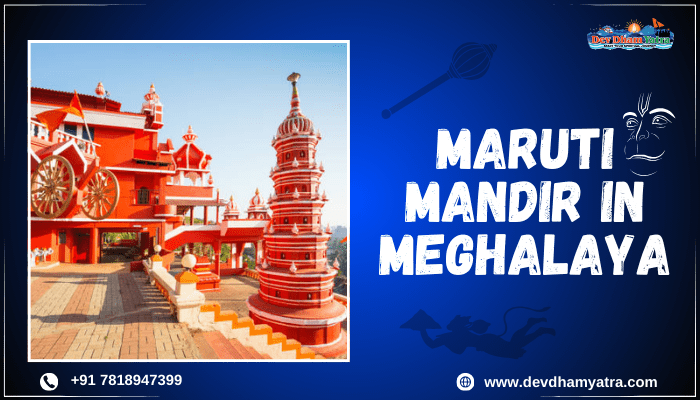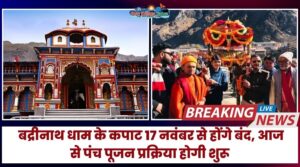The four sacred abodes of Hindu gods – Badrinath, Kedarnath , Gangotri, and Yamunotri – are together known as ‘Char Dham,’ a term coined by the renowned Hindu philosopher Shri Adi Shankaracharya. These four sanctuaries, which are spread across Uttarakhand’s districts, impart their majesty on the state. Because of their significance, a pilgrimage to these four sacred Indian places is considered a road to Moksha in Hindu mythology . These shrines are not only amazing places to seek salvation, but they also leave you with strong memories of the state’s breathtaking beauty in the Garhwal Himalayan Range.
The expedition travels from Yamunotri to Gangotri, Kedarnath, and eventually Badrinath, the Chardham Yatra’s last salvation destination. This holy pilgrimage Yatra attracts millions of devotees from all over the world each year. Other travellers, on the other hand, only do the Do Dham Yatra, which includes visits to Badrinath, Kedarnath, and Gangotri, Yamunotri.
We emphasise not only on the certainty of conviction associated with these two holy places, but also on the numerous lovely characteristics that rely on their contested terrains, as we dedicate this article to people who desire to embark on a vacation to Badrinath and Kedarnath Dhams.
Kedarnath Yatra

Kedarnath is a sacred Hindu town in Uttarakhand’s Rudraprayag district. It is one of the Himalayan Char Dhams, and it is located at the Mandakini River’s head at an incredible height of 3584 metres above sea level.
Thousands of visitors and pilgrims visit the Kedarnath temple each year, which is nestled among the spectacular snow-capped Garhwal Himalayan peaks. Also, even in the hiking circuit, the Kedarnath yatra is breathtakingly gorgeous and highly diversified.
Because of the rhododendron woods, snow-covered mountains, and magnificent views of nature, it is known for the old Shiva shrine. It provides a tranquil ambiance with a nicely painted backdrop. It’s incomparable since it combines devoutness with adventure .
About Kedarnath
The “emancipation crop” that grows here is named Kedarnath, which means “Lord of the Field.”. There are still question about who built the temple or when it was built! The 7th or 8th century is one of the first references to Kedarnath. Adi Shankara is also said to have perished near the sanctuary.
History & Mythology
It is thought that after the war of Kurukshetra, the Pandavas travelled to Banaras to repent of killing their own and seek the Lord’s blessings. Shivji, on the other hand, wanted to avoid meeting the brothers and sought refuge in Guptakashi.
Pandavas, on the other hand, were giving up their quest for the Lord, and Shivji chose to disguise himself as a buffalo when they finally found him so that they wouldn’t recognise him. Shivji wanted to conceal even more now that the Pandavas were getting closer.
As a result, He made the decision to go underground and become invisible as well. Brother Bhma, on the other hand, battled the bull’s legs and tail to keep him from running. Unfortunately, the Lord plunged and vanished at that spot, leaving just his hump to be venerated at the Kedarnath Temple today.
The Pandavas were excused from their misdeeds by cosmic energy, according to legend, and Shivji promised that He would be present in Jyotirlinga form at Kedarnath from then on.
Location
Kedarnath is the most remote of the Chota Char Dham locations, located in the Rudraprayag district. Kedarnath is surrounded by snow-capped peaks, the most prominent of which are the Kedarnath mountain (6,940 mts) and the Kedar Dome. It is located near the Chorabari Glacier, which is the source of the Mandakini river (6,831 mts). The settlement, which is 223 kilometres from Rishikesh, is constructed on a barren stretch of ground along the river’s edge. Due to flash floods produced by excessive rains in Uttarakhand in 2013, the town sadly sustained considerable damage. The temple has miraculously survived the natural disasters!
Weather
Kedarnath has cool summers, which are typical of Himalayan weather, and exceedingly tough and brutal winters. Summer is the best time to go sight-seeing, visit temples, and visit local sites. In the summer, the average temperature is around 17 degrees.
The monsoon season is tough, and the area has seen heavy rains on numerous occasions, most recently in 2013. During the monsoon season, the temperature hovers around 12 degrees . Winters are harsh, difficult, and uninhabitable. From November to April, Lord Kedarnath’s palki is moved to its winter residence near Guptakashi — Ukhimath. This time of year, the weather is always in the negative!
How to get to Kedarnath
By Air
The nearest airport is Dehradun’s Jolly Grant Airport, which is 238 kilometres away. With daily flights to Delhi, the airport is well connected. From the airport to Gaurikund, taxis are readily available.
By Rail
Rishikesh is the nearest railway station to Kedarnath, located 216 kilometres away on NH58. Gaurikund is very well connected to Rishikesh by motorable roads. Gaurikund is easily accessible via taxis and buses
By Road
Gaurikund is the last and the final motorable location before reaching Kedarnath. From there, you’ll be trekking for around 16 kilometres. Gaurikund is well-connected to the rest of North India. From Haridwar, Rishikesh, and Rudraprayag to Sonprayag, where private vehicles are permitted, buses and shared cabs are available.
Rishikesh and Shrinagar are served by ISBT, Kashmiri Gate. The government provides a shared cab service from Sonprayag, which will drop you off in Gaurikund for a charge.
Helicopter
If you don’t want to travel by road , you can even take a helicopter ride (but I definitely recommend the trek!). The services are accessible from a variety of helipads, including Guptkashi, Sersi, and Phata.
Places to visit in Kedarnath
Kedarnath Temple

The Kedarnath Temple, which is surrounded by the majestic Garhwal Himalayas, is one of Lord Shiva’s twelve Jyotirlingas. Kedarnath Temple, dedicated to Lord Shiva, is one of the 275 Paadal Petra Sthalams (the world’s most powerful Shiva temples) and the most important of the Panch Kedars
You will lose all sense of time here, with fresh air synonymous with the hills and breathtaking vistas that you must earn! This place has been revered for thousands of years, and the energy of the region is one of optimism, hope, and optimism for the future. A tiny chamber featuring images of Parvati and the Pandavas greets visitors as they enter the temple. The hall is adorned with statues of Krishna, Pandavas, Draupadi, Virbhadra, and a variety of other gods and goddesses! Inside the temple, there is a conical rock known as Sadashiva, which is venerated (forever Shiv).
Kalimath

Kalimath is a sacred site on the Saraswati River’s banks. Kalimath, at an elevation of 1800 metres, is one of India’s 108 Shakti Peeths. Kalimath is located in the midst of nature, providing a healthy and holy environment. Kalimath is home to the Goddess Kali Temple. According to legend, Kali Goddess fled underground at this location after murdering Raktbeej .
Gandhi Sarovar

Gandhi Sarovar, also known as Chorabari Tal, is a small crystal clear lake. This is due to its location at the mouth of the Chorabari Bamak glacier. At 3,900 metres above sea level, Gandhi Sarovar is at the foot of the Kedarnath and Kirthi Stambh peaks . The lake is reached after completing a 4-kilometer journey from Kedarnath Temple.
Gaurikund Temple

The Goddess Parvati is honoured in the Gaurikund temple. This is where, according to myths and legends, Goddess Parvati performed penance combining ascetic and yoga practises in order to win Shiva’s heart. Lord Shiva is said to have confessed his love for the Goddess here, and the two were wedded in Triyuginarayan temple.
Bhairav Temple

Bhairavnath Temple, also known as Bhairon Baba Mandir, is located on the eastern hill of Uttarakhand’s Himalayan Himalayas, south of the Kedarnath temple. The temple is devoted to Bhairav, Lord Shiva’s ferocious embodiment of destruction and devastation. The temple has breathtaking views of the Himalayas and is a lovely stop on your way to Kedarnath!
Shankaracharya Samadhi

Adi Shankaracharya was a Hindu philosopher who is credited with uniting and solidifying Hinduism’s core ideas. He resolved to seek moksha at Kedarnath at the age of 32, and merged with the land near the Kedarnath Temple. The samadhi can be found directly behind the temple.
Trek to Kedarnatha

The Lord Kedarnatha (Shivji) Temple, which rests at the summit’s base, has weathered the test of time and is adored by spiritual pilgrims.
Every year, millions of pilgrims travel thousands of miles to offer their prayers and seek the blessings of the Hindu Deity. The temple, which faces the Kedar Parvat, is located at the base of the Kedarnath Peak. Kedarnath is a beginner-level walk that is exceptionally attractive in the winter. Nature lovers and passionate trekkers alike enjoy this one of the most magnificent crests in the Himalayan region.
Guptakashi

Guptkashi is 47 kilometres from Lord Shiva’s sacred sanctuary of Kedarnath. It is situated on a ridge on the west side of the Mandakini river valley, at an elevation of 1,319 metres above sea level, on the way to Kedarnath. Guptkashi is a religiously significant town in Uttarakhand since it is home to historic temples such as Vishwanath and Ardhnareshwar. Manikarnika Kund is a popular tourist destination where two rivers, the Ganga and the Yamuna, meet.
Badrinath Yatra

Badrinath is one of India’s four most important Char Dham pilgrimage locations, as well as the Chota Char Dham. Badrinath is charmingly ensconced on the banks of the Alaknanda River, at an average elevation of 10,827 feet above sea level.
The sacred temple of Badrinath, dedicated to the preserver, Lord Vishnu, gives the town its name. Badrinath is one of the five Badri (Lord Vishnu) temples in the Garhwal region.
The temple is remarkable in and of itself, thanks to its heritage and traditional Garhwali wooden architecture. Badrinath will steal your breath away with the breathtaking vistas all around and the wonderful and lovely landscape.
History & Mythology
The temple is thought to have been founded by Adi Shankaracharya and has been repaired several times since then. Adi Shankaracharya re-established the sacred town of Badrinath in the 9th century.
Pilgrims are said to have walked hundreds of miles to pay their respects at the hallowed sites. It is not only a component of the Char Dham Yatra, but it is also one of the Panch Badri.
Badri is the name given to the place in honour of Lord Vishnu and his dual form of Nara-Narayana. As a result, you may recall Krishna saying Arjun in the Mahabharata, “You were Nara in a previous incarnation and Narayana for your compassion and didst commit startling harshness at Badri for many many years.”
In reality, the mountains are mentioned several times in the Mahabharata; the Pandavas are claimed to have died after completing their Ascension to Heaven –Swargarohini. Pandavas are said to have passed through Badrinath and the village of Mana.
According to another legend, when Ganga was ordered to descend to earth to relieve the suffering people, the ground was unable to withstand the enormous force and Ganga was split into 12 holy rivers, one of which is the Alaknanda river.
Best time to visit Badrinath
For six months of the year, Badrinath is open. If you want the most pleasant voyage, go shortly before the journey dates close, which is usually a few weeks before Diwali. May and June are also acceptable months to visit, but expect long lines and a large influx of pilgrims. During the monsoon season, it’s best to stay away.
How to get to Badrinath
By Road
Badrinath has good road access and is well connected to Ghaziabad by NH58. Buses to Rishikesh are easily available from ISBT Kashmiri Gate in Delhi. After that, you can rent a taxi to get to Badrinath. You can even drive up to Badrinath if you choose.
By Train
Rishikesh is the nearest train station. Rishikesh is well connected to major Indian towns, as it is an important and fundamental Hindu destination. From Rishikesh, taxis and buses are readily available. It should also be highlighted that Haridwar railway station is a potential choice in terms of connectivity.
By Air
closest airport to Badrinath is Jolly Grant Airport. It is 314 kilometres from our humble house. From Delhi, there are several flights every day. Taxis are readily accessible for sharing and personal arrangements.
Places to visit near Badrinath
Tapt Kund

Apart from the temple, you must also pay a visit to the Tapt Kund, a natural hot spring on the banks of the Alaknanda River. Apart from possessing restorative characteristics, the temperatures in the spring reach 45 degrees Celsius, making for a nice break from the surrounding climate. The Tapt Kund is thought to be where Agni Deva lives (God of Fire).
Narad Kund

The second most visited sight in Badrinath is Narad Kund, which is located in the holy town of Badrinath. Adi Shankara discovered Lord Vishnu’s idol here. Narad Kund is a natural bay in the Alaknanda River that is surrounded by a rock.
Badrinath Temple

The temple is devoted to Lord Vishnu and is one of Vaishnavites’ 108 Divya Desams/holy sanctuaries. The temple is conical in design, and the temple complex has 15 idols. These idols are all made of black stone. Vishnuji’s idol is in a meditative state, inviting worshipers to seek inner peace as well.
The temple’s architecture will undoubtedly entice you. It has a strong resemblance to a Buddhist temple, with stone arched windows on the façade. You’ll want to take in the sheer size of the 50-foot-tall temple and the sense of serenity it instils in you.
Vasudhara Falls

Vasudhara Falls, which translates to “sweet nectar,” is one of Uttarakhand’s most beautiful destinations. This stunning cascade cascades down from a height of 400 feet. The blissful attractiveness of the Vasudhara falls is said to be only accessible to those who are pure and guilt-free.
Mana village

Mana hamlet, about 3 kilometers from Badrinath town, is one of the best tourist attractions around. The settlement is located on the Saraswati River’s banks. It stands at a height of around 3219 metres. Himalayan mountains surround the village. Mana, the final Indian village before India’s Himalayan border with Tibet, is located in the Chamoli district.

